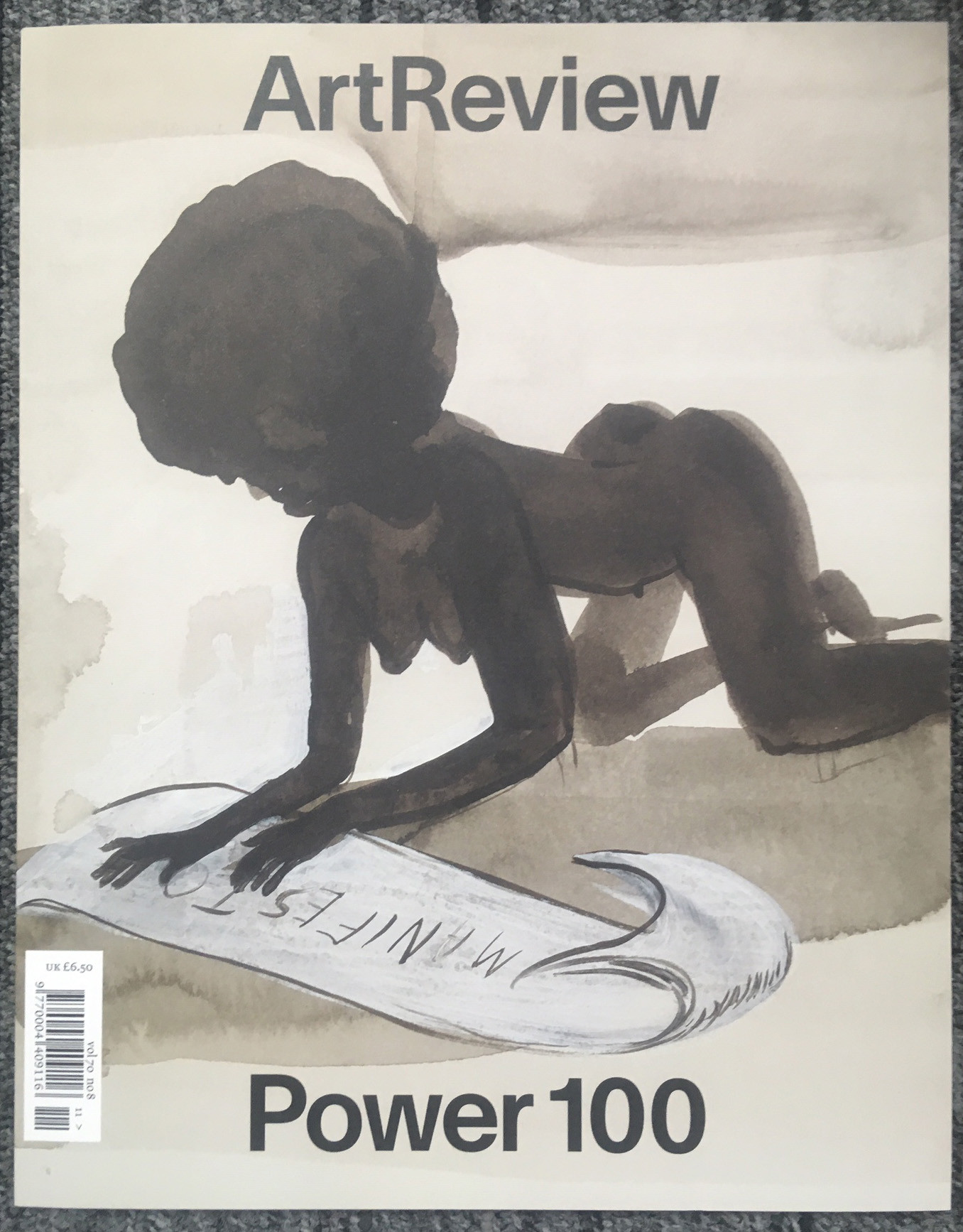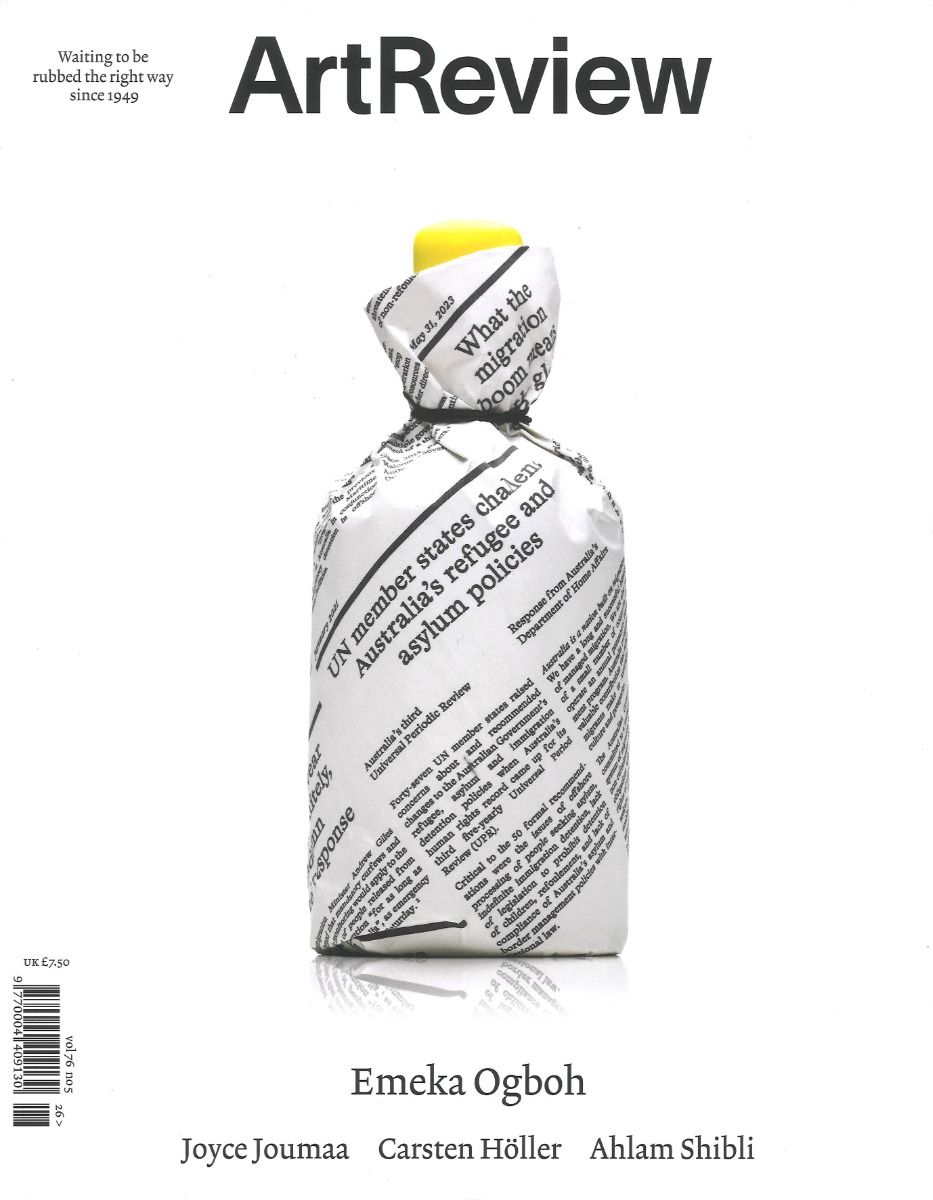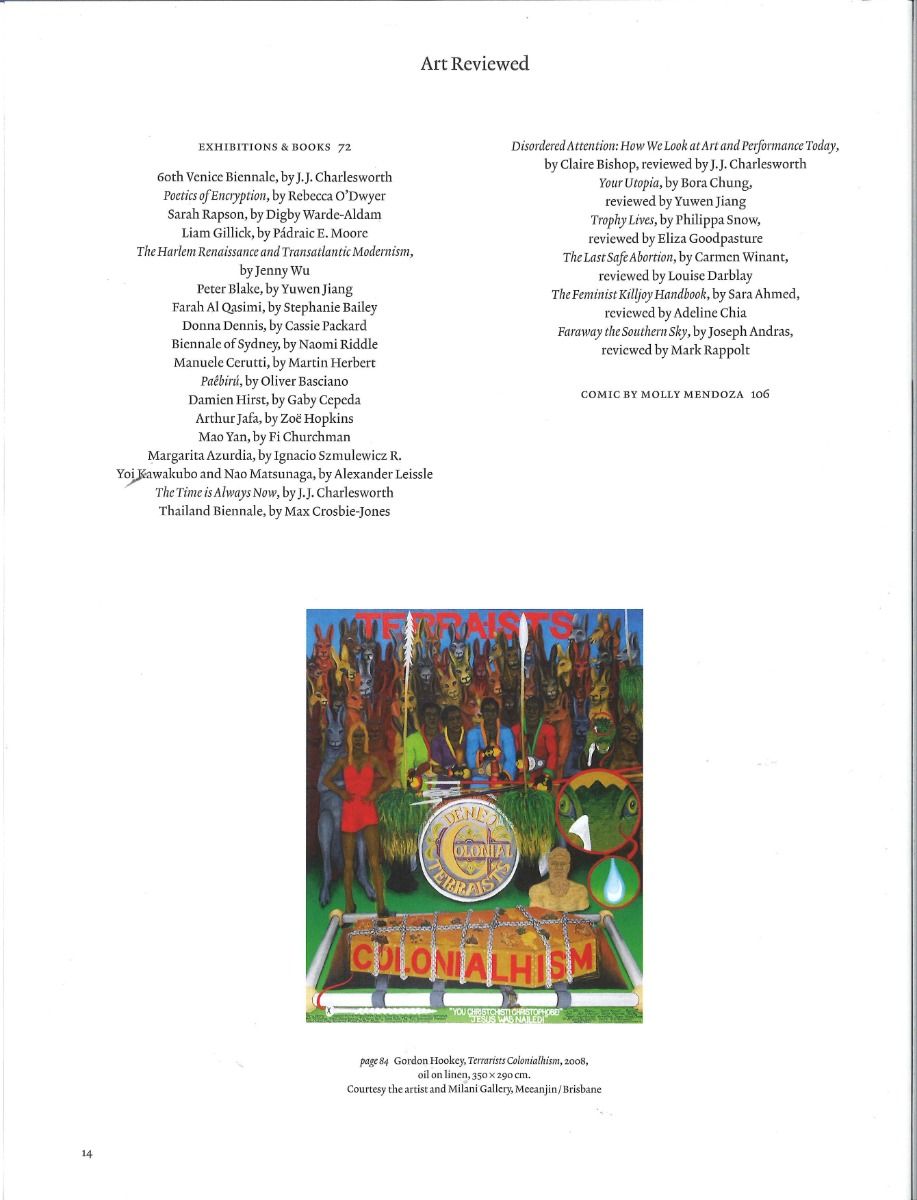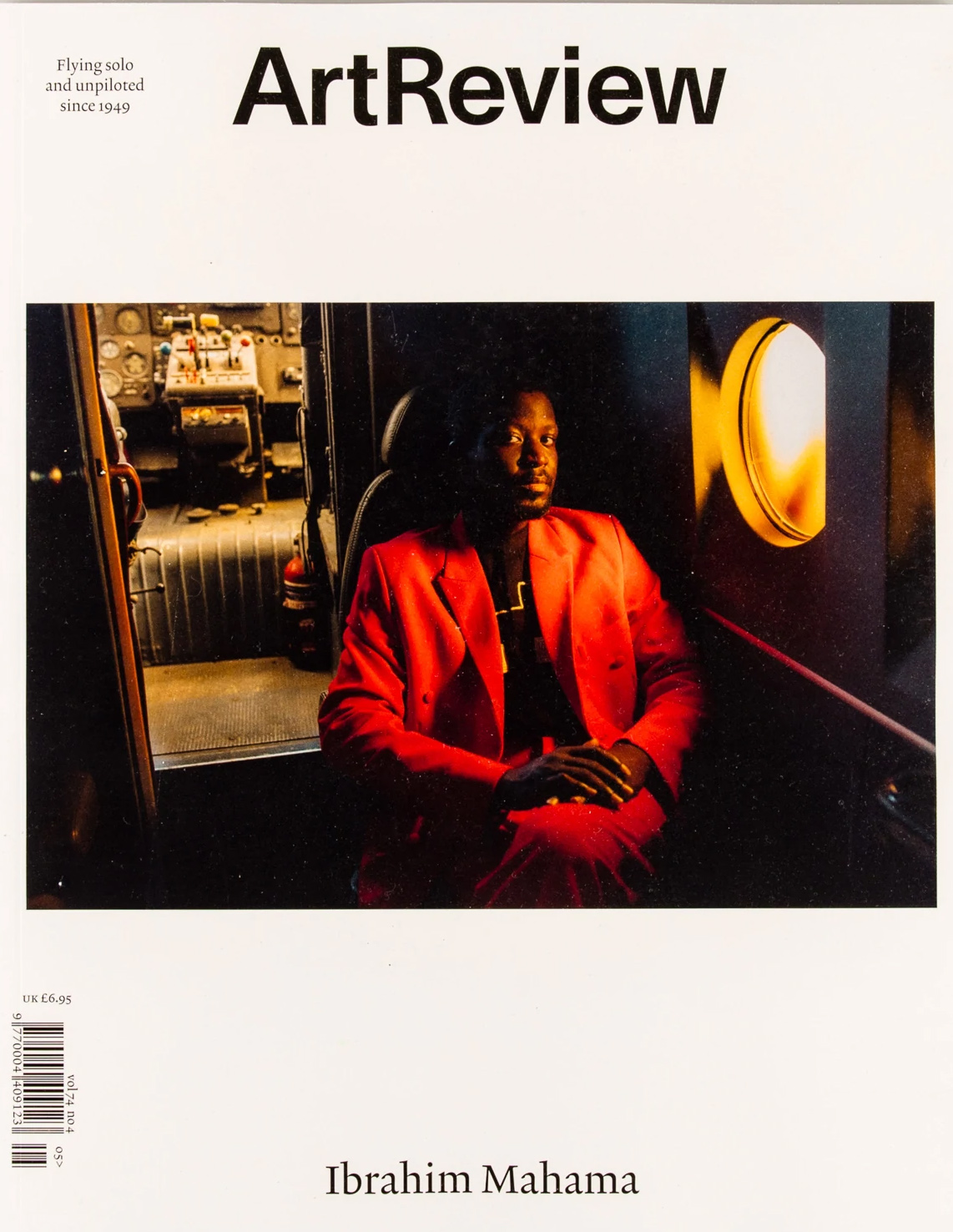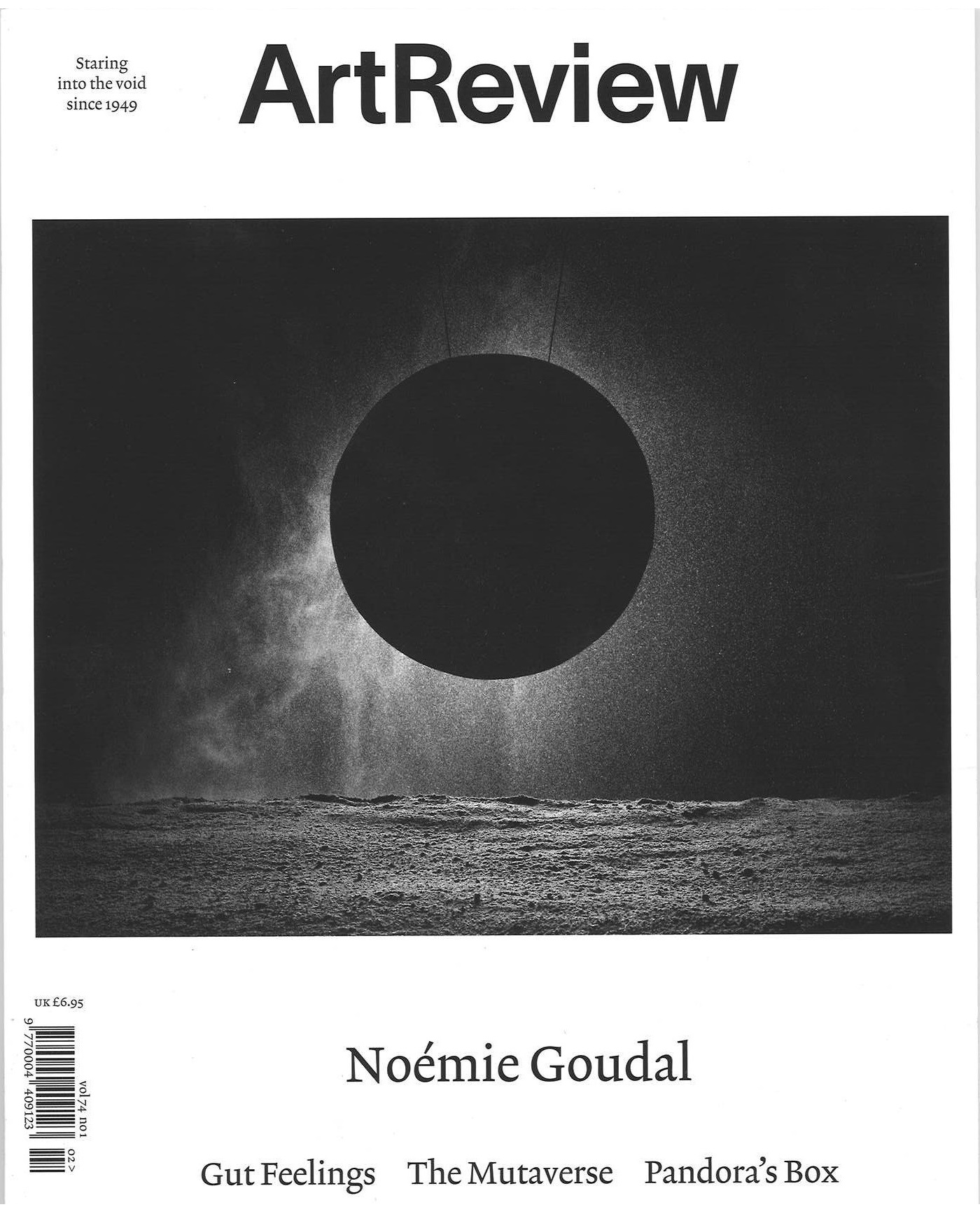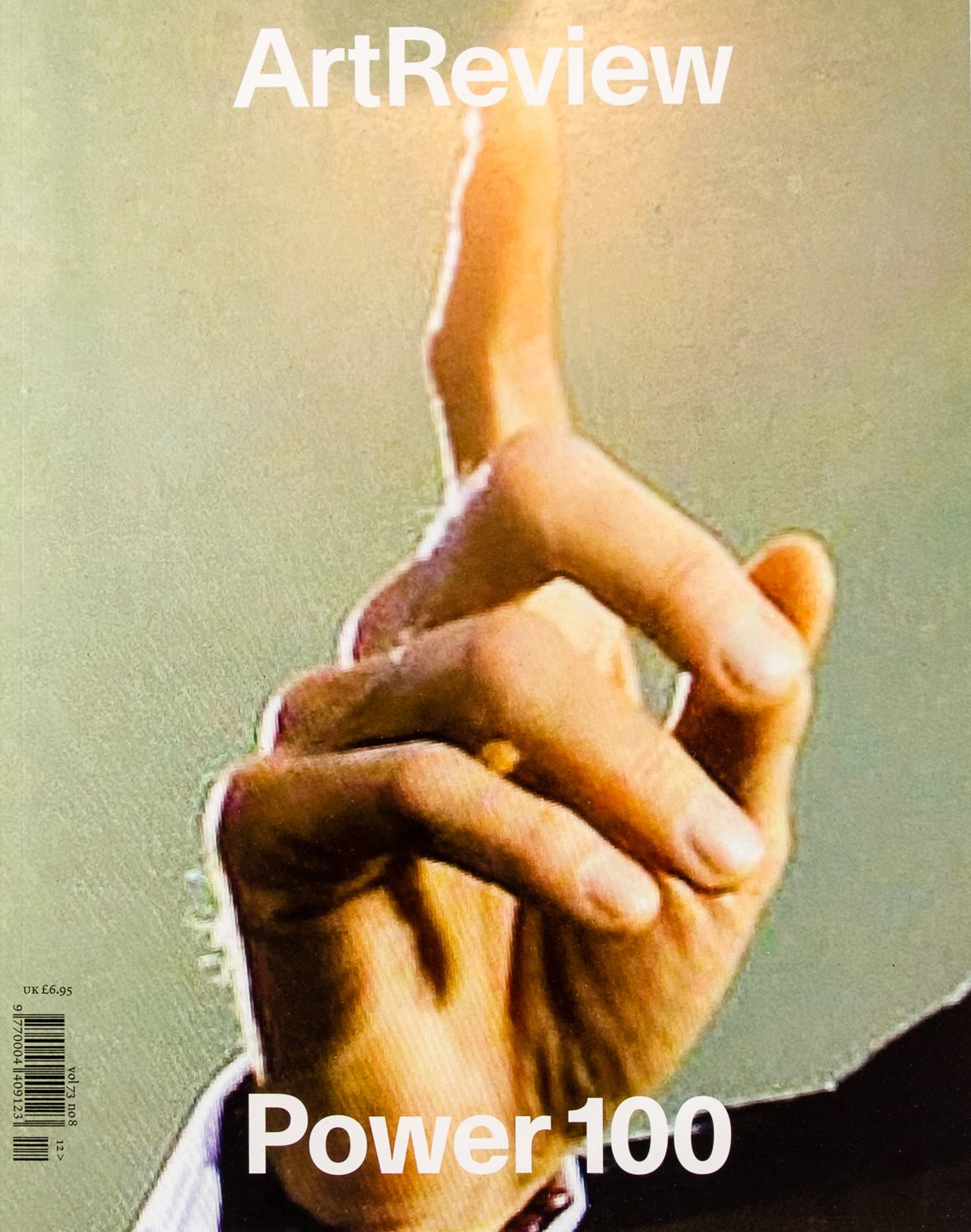ArtReview 140, Vol. 73 No. 6 |
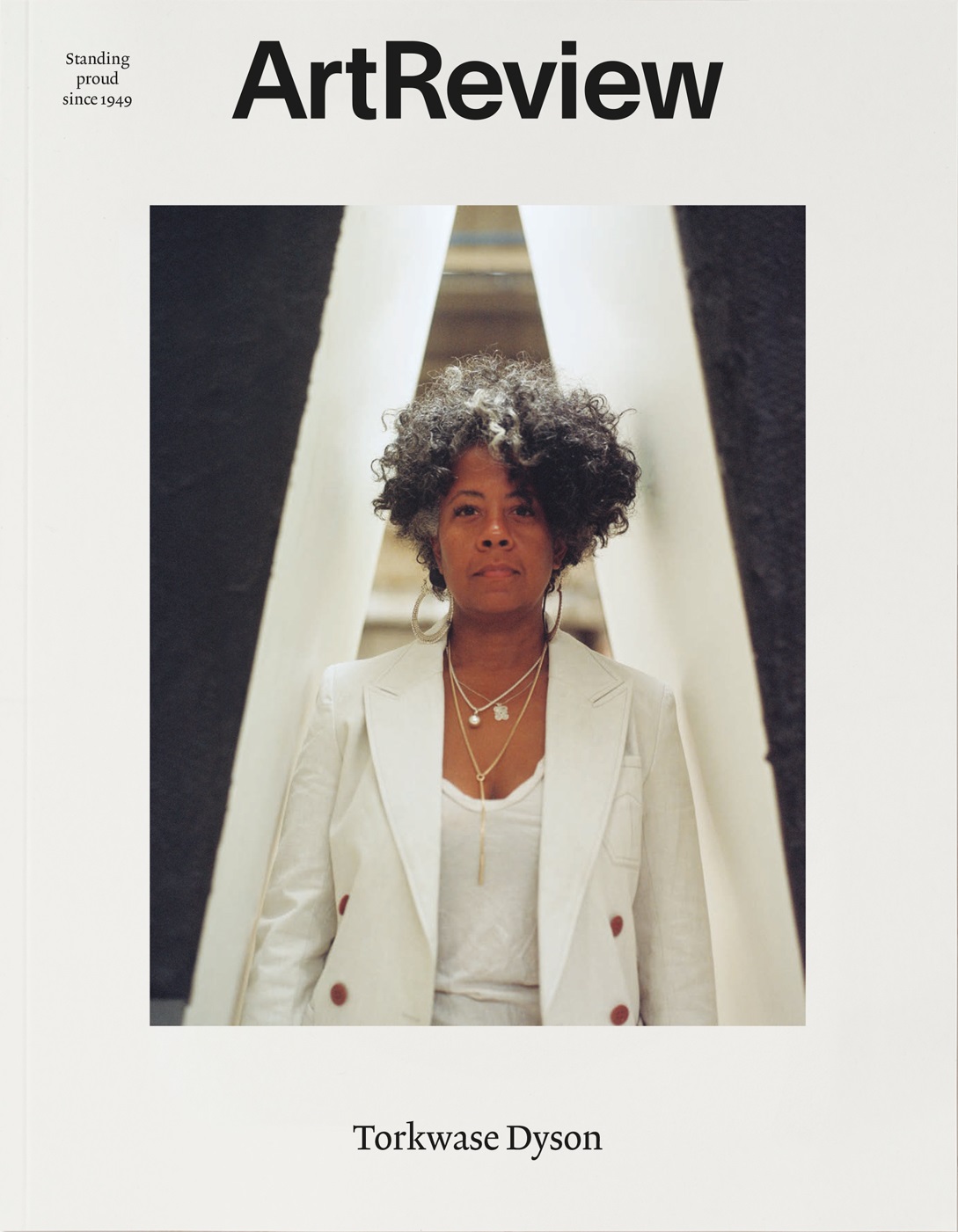
Detalii ArtReview 140, Vol. 73 No.
Produs actualizat în urmă cu 15 zile
Descriere YEO:
Descriere magazin:
Featuring Torkwase Dyson, Deana Lawson, Jaider Esbell, Anicka Yi, Anthea Hamilton, and London’s alternative art spacesArtReview’s October issue is out now, with a focus on networks, collaborations, cosmologies and kinship: lessons in how to interact with the outside world.Chris Fite-Wassilak considers the gradual disappearance of London’s project spaces as a mode of exhibiting art, and the corresponding rise of dispersed, communal pop-up projects. ‘London’s “underground” is getting more diffuse, and more private’, he writes, moving away from ‘the postindustrial, squatting legacy-model of taking up physical space with group shows in massive crumbling warehouses or old shopfront locations.’ If change is inevitable in a fast-paced environment increasingly shaped by private developments, it is important to acknowledge what’s at stake for the city’s art landscape. Indeed, Fite-Wassilak suggests, ‘the point of project spaces is to challenge what gets shown, to widen the homogeneity and repetition that commercial galleries tend to lean towards, to rattle the assumptions that there is just one way to “artworld”’.Collaboration as artistic practice features heavily in the work of Torkwase Dyson, profiled here by Mark Rappolt. For her exhibition in London in October, the New York-based artist has created a series of new largescale geometric sculptures that act as a sites of collaboration with dancers, poets, artists, curators, performers, musicians and academics (including Chicago-based DJ and producer Ron Trent, and musicians Gaika and Ase Manual, who are contributing to a limited-edition dubplate that accompanies the show). The show, Liquid a Place, forms part of her ongoing work of making connections between the Black diaspora, imagining a fluid common space for both sharing and resistance. ‘And at a time when, post virus-enforced seclusion, we are both longing for physical encounters with artworks as discrete objects and refiguring our expectations of art as something that does something,’ Rappolt writes, ‘Dyson’s work seems perfectly to fit the moment.’Also in the issue…Fi Churchman dives into the photographic work of Deana Lawson, which builds on the collective experiences of Black communities, be it in the US, Ghana, Ethiopia, the Democratic Republic of Congo, Jamaica or Haiti. ‘Drawing from photographic genres such as studio photography, documentary, family photographs and the tableaux,’ Churchman writes, ‘Lawson’s large-format colour work typically portrays members of her local community in Brooklyn, as well as strangers, in scenes that reflect on family, love, selfhood, beauty, pride and the Black aesthetic’.Meanwhile, the Makuxi artist Jaider Esbell’s intricate, colourful paintings are inspired by Makunaimi – both a god and an ancestor – as well as by conversations and collaborations with shamans who represent different peoples, confronting the environmental and social abuse of Makuxi land in the Roraima region of Brazil. Speaking to Oliver Basciano, Esbell describes his work as a form of pedagogical activism, or ‘artivism’, ‘aimed at giving voice to his own indigenous group and others’.That preoccupation of human relationships with nature, and how we might create a more symbiotic, rather than exploitative way of understanding the natural world around us is also addressed in the work of Anicka Yi, who...

ArtReview 140, Vol. 73 No. - Disponibil la carturesti.ro
Pe YEO găsești ArtReview 140, Vol. 73 No. de la ArtReview, în categoria Carte straina.
Indiferent de nevoile tale, ArtReview 140, Vol. 73 No. 6 | din categoria Carte straina îți poate aduce un echilibru perfect între calitate și preț, cu avantaje practice și moderne.
Caracteristici și Avantaje ale produsului ArtReview 140, Vol. 73 No.
- Departament: gaming-carti-birotica
- Ideal pentru pasionații de jocuri, birotică și distracție online.
Preț: 49 Lei
Caracteristicile produsului ArtReview 140, Vol. 73 No.
- Brand: ArtReview
- Categoria: Carte straina
- Magazin: carturesti.ro
- Ultima actualizare: 11-11-2024 01:46:56
Comandă ArtReview 140, Vol. 73 No. Online, Simplu și Rapid
Prin intermediul platformei YEO, poți comanda ArtReview 140, Vol. 73 No. de la carturesti.ro rapid și în siguranță. Bucură-te de o experiență de cumpărături online optimizată și descoperă cele mai bune oferte actualizate constant.
Descriere magazin:
Featuring Torkwase Dyson, Deana Lawson, Jaider Esbell, Anicka Yi, Anthea Hamilton, and London’s alternative art spacesArtReview’s October issue is out now, with a focus on networks, collaborations, cosmologies and kinship: lessons in how to interact with the outside world.Chris Fite-Wassilak considers the gradual disappearance of London’s project spaces as a mode of exhibiting art, and the corresponding rise of dispersed, communal pop-up projects. ‘London’s “underground” is getting more diffuse, and more private’, he writes, moving away from ‘the postindustrial, squatting legacy-model of taking up physical space with group shows in massive crumbling warehouses or old shopfront locations.’ If change is inevitable in a fast-paced environment increasingly shaped by private developments, it is important to acknowledge what’s at stake for the city’s art landscape. Indeed, Fite-Wassilak suggests, ‘the point of project spaces is to challenge what gets shown, to widen the homogeneity and repetition that commercial galleries tend to lean towards, to rattle the assumptions that there is just one way to “artworld”’.Collaboration as artistic practice features heavily in the work of Torkwase Dyson, profiled here by Mark Rappolt. For her exhibition in London in October, the New York-based artist has created a series of new largescale geometric sculptures that act as a sites of collaboration with dancers, poets, artists, curators, performers, musicians and academics (including Chicago-based DJ and producer Ron Trent, and musicians Gaika and Ase Manual, who are contributing to a limited-edition dubplate that accompanies the show). The show, Liquid a Place, forms part of her ongoing work of making connections between the Black diaspora, imagining a fluid common space for both sharing and resistance. ‘And at a time when, post virus-enforced seclusion, we are both longing for physical encounters with artworks as discrete objects and refiguring our expectations of art as something that does something,’ Rappolt writes, ‘Dyson’s work seems perfectly to fit the moment.’Also in the issue…Fi Churchman dives into the photographic work of Deana Lawson, which builds on the collective experiences of Black communities, be it in the US, Ghana, Ethiopia, the Democratic Republic of Congo, Jamaica or Haiti. ‘Drawing from photographic genres such as studio photography, documentary, family photographs and the tableaux,’ Churchman writes, ‘Lawson’s large-format colour work typically portrays members of her local community in Brooklyn, as well as strangers, in scenes that reflect on family, love, selfhood, beauty, pride and the Black aesthetic’.Meanwhile, the Makuxi artist Jaider Esbell’s intricate, colourful paintings are inspired by Makunaimi – both a god and an ancestor – as well as by conversations and collaborations with shamans who represent different peoples, confronting the environmental and social abuse of Makuxi land in the Roraima region of Brazil. Speaking to Oliver Basciano, Esbell describes his work as a form of pedagogical activism, or ‘artivism’, ‘aimed at giving voice to his own indigenous group and others’.That preoccupation of human relationships with nature, and how we might create a more symbiotic, rather than exploitative way of understanding the natural world around us is also addressed in the work of Anicka Yi, who...

